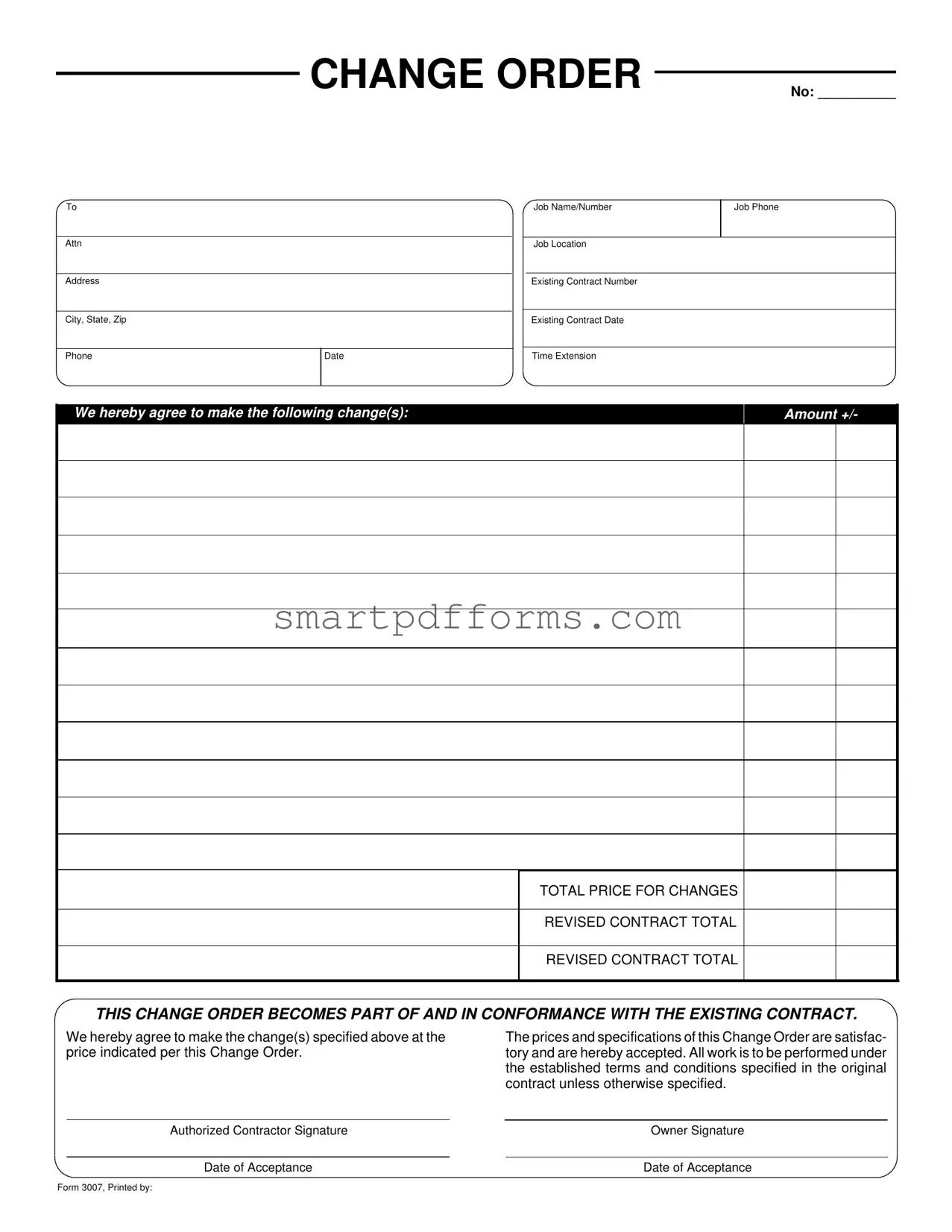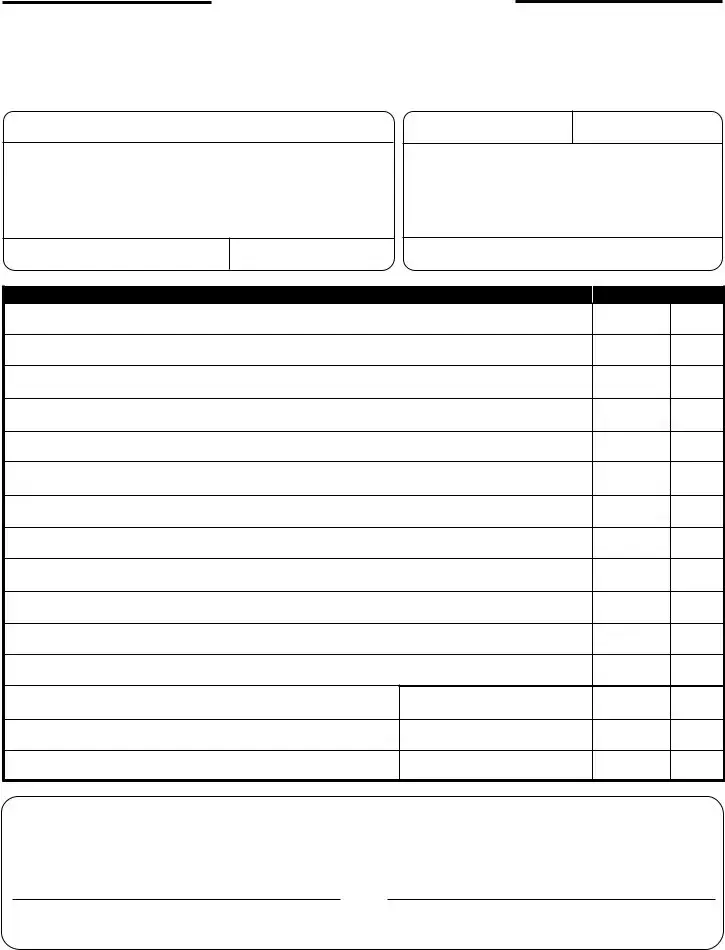Managing financial transactions with precision is crucial in any business, especially when it comes to amending existing contracts. The Bank Change Order form serves as a vital tool in this process, allowing for the seamless modification of terms within an ongoing contract. This document, identified by a unique Change Order Number, specifies the job name or number, job phone, attention, job location address, and existing contract details including number, date, and the city, state, and zip of the contract location. It outlines the changes agreed upon by the parties involved, detailing any adjustments in the amount and totaling the revised contract amount. This ensures that both the contractor and the owner are in clear agreement about the scope and cost of the modified work, making this change legally binding. The form includes spaces for the authorized contractor's and the owner's signatures, alongside the date of acceptance, solidifying the agreement. By becoming a part of the existing contract, the Change Order upholds the terms and conditions previously established unless noted otherwise. This document is not only about financial adjustments but also about upholding the integrity of contractual agreements and ensuring mutual satisfaction.

